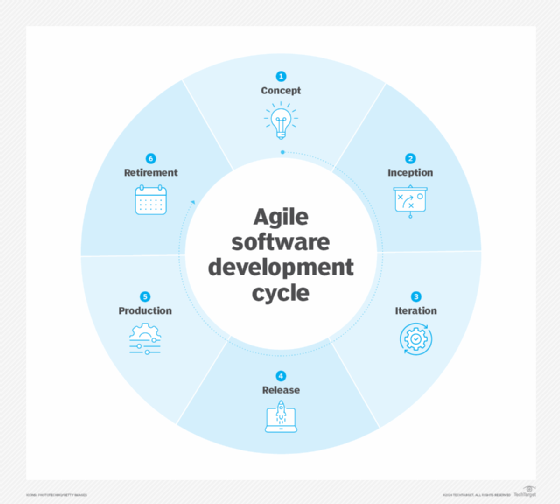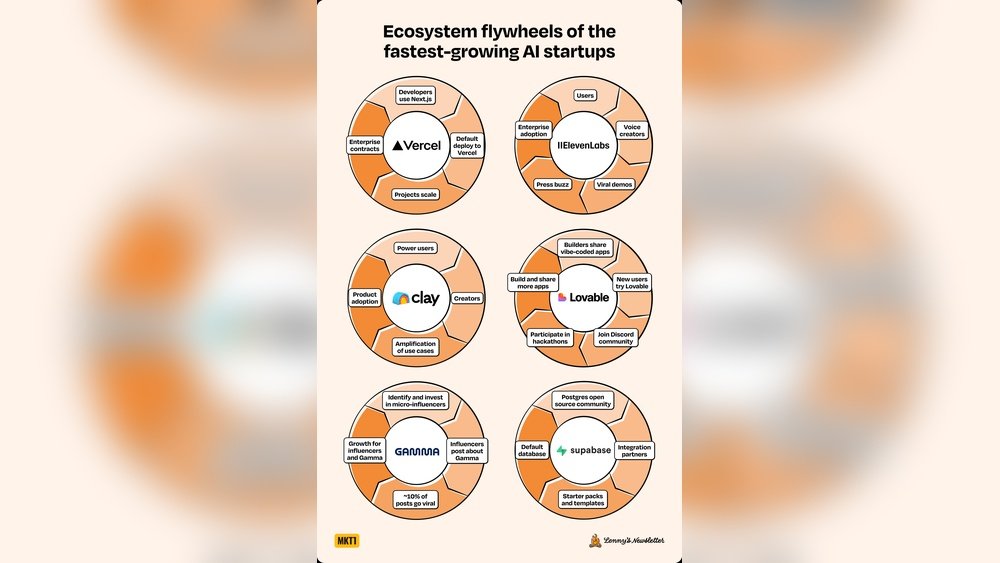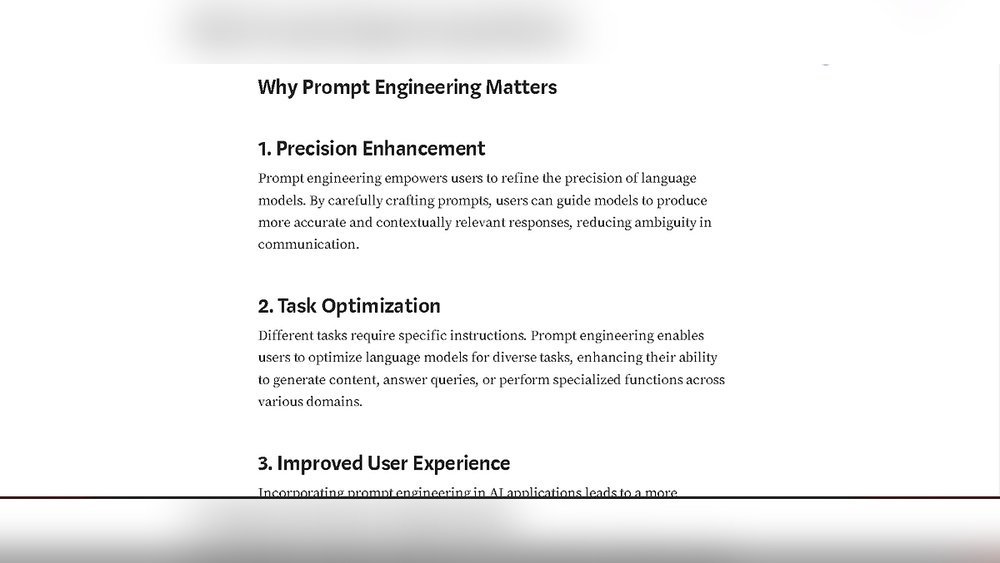Agile software development is fast and flexible. Agile Software Development Company changes with needs quickly.
In today’s digital world, speed matters. Companies need to adapt and grow swiftly. Agile software development company excel at this. They use methods that focus on teamwork and customer needs. This approach allows them to deliver projects faster and with higher quality.
Agile Software Development CompanyTheir flexibility means they can easily adjust to changes. This saves time and resources. Agile companies help businesses stay ahead in the competitive market. They provide solutions that match the evolving tech landscape. Discover how these companies transform ideas into reality efficiently. Learn why they are vital for success in modern software development.

Credit: itcraftapps.com
Agile Methodology Essence
The essence of Agile methodology is flexibility and efficiency. Agile software development company thrive by embracing change. They value collaboration, feedback, and incremental progress. Teams work in short cycles, allowing quick adjustments. This leads to faster delivery and improved quality.
Core Principles
Agile methodology includes several core principles. Customer satisfaction is a top priority. Teams focus on delivering valuable software early. Continuous improvement is important for success. Developers and business people must work together daily. Trust and support within teams are essential.
Another principle is welcoming changing requirements. Agile encourages adaptability. Teams use face-to-face communication for better results. Working software is the primary measure of progress. Sustainable development is also a core idea. This ensures teams maintain a steady pace.
Values Driving Success
Agile values prioritize individuals and interactions. Over processes and tools, people are key. Working software is more important than documentation. Customer collaboration takes precedence over contract negotiation. Responding to change is valued above following a plan.
These values foster innovation. Teams communicate openly and solve problems together. Agile companies benefit from feedback loops. They adapt quickly to meet customer needs. This leads to successful projects. Agile values drive results and satisfaction.
Transforming Project Management
Agile software development has changed project management forever. It introduces flexible and efficient methods. Teams now handle tasks with precision and speed. This approach adapts to changing needs. Agile promotes collaboration and transparency. It ensures successful project delivery.
Adaptive Planning
Agile focuses on adaptive planning. Plans adjust based on current project needs. This flexibility helps teams respond to changes. Planning occurs in short cycles, called sprints. It allows for regular reassessment. Teams can prioritize tasks effectively. This reduces wasted effort and time.
Iterative Progress
Iterative progress is key in Agile development. Projects advance in small, manageable steps. Each step builds upon the last. This method ensures steady progress. Teams receive constant feedback. It helps refine processes and improve outcomes. Iterative progress keeps the team aligned. It reduces the risk of major setbacks.
Collaboration And Communication
Agile software development thrives on collaboration and communication. These two elements drive success and innovation. They help teams adapt quickly to change. With clear communication, teams enhance productivity and creativity. Collaboration bridges gaps between team members and stakeholders. It ensures everyone is aligned with project goals. Effective communication builds trust and transparency. Collaboration facilitates problem-solving and decision-making. Together, they create a robust development environment.
Team Synergy
Team synergy is vital in agile development. It involves working together seamlessly. Each member brings unique skills to the table. This diversity fuels innovation and efficiency. Regular meetings encourage open dialogue. They help resolve issues swiftly. The team sets priorities collectively. This fosters a sense of ownership and accountability. A strong team bond enhances morale. It leads to better project outcomes.
Stakeholder Engagement
Stakeholder engagement is crucial for project success. It involves active participation from clients and users. Regular updates keep stakeholders informed. Feedback loops ensure their needs are met. This engagement builds trust and loyalty. It aligns project goals with business objectives. Agile teams value stakeholder input. It guides the development process. Engaged stakeholders contribute to strategic planning. They help identify risks early on.

Credit: www.techtarget.com
Customer-centric Approach
Agile software development company places great emphasis on a customer-centric approach. This method prioritizes the customer’s needs at every stage of development. It ensures that software solutions align closely with user expectations and business goals. Engaging customers in the process enhances trust and satisfaction. This leads to better retention and loyalty. Agile teams work collaboratively with clients to understand their unique requirements. This dynamic interaction fosters innovation and adaptability.
Feedback Integration
Feedback plays a crucial role in agile development. Agile teams actively seek customer input at regular intervals. This helps identify areas for improvement early. Teams can quickly adapt to changing needs. Incorporating feedback ensures the product evolves according to customer desires. This continuous loop creates a product that resonates with users. Agile teams use feedback to refine features and functionalities. This results in a more polished and effective software solution.
Delivering Value
Delivering value is a core principle of agile development. Agile companies focus on providing tangible benefits to customers. They prioritize features that bring the most value. This ensures the software meets key business objectives. Regular releases keep customers engaged and informed. Customers can see the progress and benefit from enhancements promptly. Agile teams measure success by the value delivered. This approach aligns the development process with customer satisfaction.
Technology And Tools
In Agile software development, technology and tools are vital. They ensure efficient project management. Developers rely on these tools for smoother workflows. They also facilitate better collaboration. Choosing the right technology can enhance productivity. It also minimizes errors and improves project outcomes.
Essential Software
Essential software in Agile includes project management tools. Trello and Jira are popular choices. They help teams track progress. Developers use code editors like Visual Studio Code. It provides robust features for coding. Communication tools like Slack are crucial too. They keep team members connected. These tools improve coordination and efficiency.
Automation Benefits
Automation offers many benefits in Agile development. It speeds up repetitive tasks. Automated testing saves time and reduces bugs. Continuous integration tools like Jenkins are key. They ensure code is always ready for deployment. Automation also improves consistency. It allows developers to focus on complex tasks.
Challenges And Solutions
Agile software development company face challenges like adapting to changing requirements and ensuring team collaboration. Solutions include regular communication and iterative feedback, fostering a flexible environment that improves productivity and innovation.
Agile software development companies are often hailed for their flexibility and speed. However, the journey is not without its challenges. Navigating these hurdles effectively can be the difference between success and failure. Here’s how you can tackle common issues and find practical solutions.
Overcoming Resistance
Resistance to change is a common challenge. Employees might be comfortable with established processes and hesitant to adopt Agile methods.
Start by addressing fears directly. Explain the benefits of Agile, such as faster delivery and better collaboration. Share success stories from other teams to build confidence.
Engage your team through training sessions. Make them interactive and fun. Ask your team what concerns them the most and work together to find answers.
Scaling Agile
Scaling Agile across a large organization can be daunting. Different teams may have varying levels of Agile maturity.
Establish a clear vision. Make sure everyone understands the company’s goals and how Agile fits into them. This alignment helps teams focus on shared objectives.
Create cross-functional teams. Encourage collaboration between departments to break down silos. Use tools like JIRA or Trello to maintain transparency and track progress.
Consider a pilot program. Test Agile in a small part of your organization first. Learn from this experience and use it to fine-tune your strategy before scaling up.
Agile is not just a methodology; it’s a mindset. How will you inspire your team to embrace this change?
Success Stories
Agile software development company have achieved remarkable success. They deliver efficient and flexible solutions. Their approach empowers teams to adapt quickly. Many businesses have benefited from their innovative methods. This section highlights success stories showcasing their impact.
Case Studies
One tech startup enhanced its product delivery using Agile methods. They reduced development time by 30%. This allowed them to stay ahead of competitors. Another case involves a finance company. They improved customer satisfaction through Agile practices. With faster feedback cycles, they tailored services to client needs.
A healthcare provider adopted Agile to streamline operations. As a result, patient care improved significantly. They reduced waiting times and increased service efficiency. These case studies illustrate the tangible benefits of Agile methodologies.
Lessons Learned
Agile teams often learn valuable lessons during projects. One key lesson is the importance of communication. Regular team meetings ensure everyone stays aligned. Transparency is crucial for project success. Flexibility is another important lesson. Agile teams adapt to changing requirements easily.
Embracing change leads to better outcomes. Teams also learn the value of feedback. Continuous feedback loops drive improvement. This leads to higher quality products. These lessons highlight the strength of Agile in software development.

Credit: www.credencys.com
Future Of Agile
The future of Agile software development looks promising and dynamic. Agile continues to adapt to the changing tech landscape. Its flexibility and iterative approach make it a top choice for many.
Emerging Trends
Agile is embracing automation in various ways. Automated testing and deployment increase efficiency. Developers save time and reduce errors with automation tools. Artificial intelligence is also making its mark. AI assists in project management and predictive analytics. Teams gain insights to make informed decisions faster.
Remote work is another growing trend. Many Agile teams now operate virtually. Collaboration tools support seamless communication across distances. These tools ensure that team members stay connected. This change has expanded the talent pool for companies.
Continuous Evolution
Agile frameworks continue to evolve to meet new demands. Scrum and Kanban remain popular choices. Yet, hybrid models are gaining traction. These models combine elements of different frameworks. Such flexibility helps teams tailor processes to their needs.
Agile’s focus on customer feedback is stronger than ever. Companies seek to deliver better user experiences. They incorporate continuous feedback loops into their processes. This helps in refining products based on real user input.
Security is becoming a priority in Agile practices. Agile teams integrate security early in the development process. This proactive approach minimizes risks and vulnerabilities.
In Agile’s future, adaptability remains key. Companies that embrace change will thrive. Agile continues to offer a robust framework for innovation and growth.
Frequently Asked Questions
What Is Agile In Software Development?
Agile in software development is a methodology emphasizing collaboration, flexibility, and customer satisfaction. Teams work in iterative cycles, delivering small, incremental updates. Agile fosters rapid adaptation to changes, improving product quality and efficiency. Popular frameworks include Scrum and Kanban, enhancing communication and productivity in development processes.
What Is The Salary Of A Software Developer In Agile?
A software developer in Agile earns between $70,000 and $120,000 annually. Salary varies by experience, location, and company size.
Who Are The 17 Founders Of Agile?
The 17 founders of Agile are Kent Beck, Mike Beedle, Arie van Bennekum, Alistair Cockburn, Ward Cunningham, Martin Fowler, James Grenning, Jim Highsmith, Andrew Hunt, Ron Jeffries, Jon Kern, Brian Marick, Robert C. Martin, Steve Mellor, Ken Schwaber, Jeff Sutherland, and Dave Thomas.
What Is An Agile Company?
An Agile company embraces flexibility, collaboration, and rapid response to change. It prioritizes customer feedback and iterative development. Teams work in short cycles, delivering continuous improvements. Agile companies foster open communication and adapt to evolving market needs quickly. They focus on enhancing productivity and innovation, ensuring value delivery efficiently.
Conclusion
Agile software development offers flexibility and fast adaptation. It suits changing needs well. Teams deliver efficient results with continuous feedback. Collaboration boosts innovation and problem-solving. Clients see timely updates and improvements. Agile methods enhance project management and workflow. This approach reduces risks and increases productivity.
Companies achieve better customer satisfaction. Agile practices align projects with business goals. Choose agile for a responsive software development strategy. It brings value and quality to every project stage.







One response to “Agile Software Development Company: Revolutionizing Projects”
[…] […]